Revell's 1/72 scale Junkers Ju 290 A-7
Alles Kaputt
by Roland Sachsenhofer

The story that the Junkers Ju 290A-7 shown here can tell has undoubtedly earned the title "highly unusual". Even a first glance finds some interesting irritations: the "Stars and Bars" of the US Armed Forces on the fuselage and wings probably indicate a captured plane captured by the Allies; the enigmatic inscription "Alles Kaputt" (Everything destroyed), however, is a bit more tricky to explain. Also exciting is the listing of the names of the American aircrew, which a closer look at the left side of the fuselage at the level of the propellers reveals. In fact, these are all references to an event that helped this large Junkers aircraft to brief notoriety in July 1945 as well as the lasting honour of having flown a world record.
The aircraft type itself is a "rare bird": as one of the few large four-engined aircraft available to the German Air Force during the war years, the Ju-290 was used as a transporter, but above all as a long-range maritime reconnaissance aircraft. A truly impressive range of almost 6000 kilometres predestined the Ju 290 for this task. The plans for regular flights to Manchuria, i.e. the territory of the Axis partner Japan, should also be seen in this light. The Ju 290 was also talked about as an "America- bomber", because the powerful aircraft giant had the potential to reach the US East Coast.
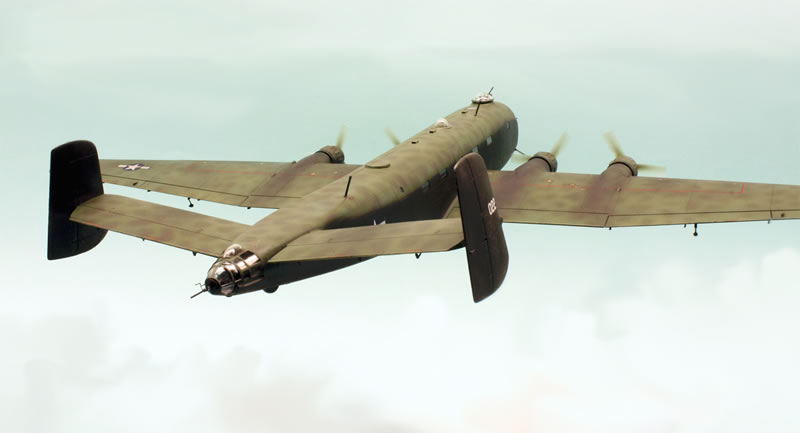
In reality, all thoughts of a direct flight to Far East Asia remained wastepaper - and whether the US East Coast was ever really approached by the German Air Force is considered unlikely to say the least and remains unclear according to current sources. What is absolutely clear, however, is that a Ju-290 did indeed successfully cross the Atlantic: on 28 July 1945, the Werknummer 0165 presented here, with the registration number PI+PS, was transferred from Orly in France to Wright Field in Ohio.
Like many of the fifty or so examples produced, this Ju 290A-7 had originally been used by the 5th FAGr (5th Long-Range Reconnaissance Group) for reconnaissance flights over the Atlantic. From the end of 1944, the aircraft with the unit registration A3+HB was used by the mysterious KG 200 - which, by the way, is also not atypical for the operational history of the Ju-290. At the end of the war, the stationing location of the 1. / KG 200 was Königgrätz in Bohemia.
When the Ju 290 A3+HB was flown to Munich by Staffelkapitän Heinz Braun on 8 May and handed over to the Americans, the aircraft was overcrowded with Wehrmacht personnel, including dozens of female Luftwaffe helpers. The risky flight had been undertaken to avoid having to surrender to the Soviets, but for Hauptmann Braun the encounter with the Americans was to deepen in an unexpected way!
Colonel Harold E. Watson, "Director of Maintenance" of the ATI (Air Technical Intelligence) selected Braun's Ju-290 as one of the German aircraft to be brought to the USA and evaluated at the ATI headquarters in Wright Field/ Ohio. It may seem surprising to find a powerful but conventional aircraft like the Ju-290 among the high-tech aircraft sought, such as the Me-262 or He-162. Nevertheless, the ATI went to considerable lengths to bring this impressive aircraft to the USA. Hauptmann Heinz Braun was engaged by Colonel Watson to take over the briefing of an American crew. When two of the BMW 801 engines proved unreliable during the training flights and had to be replaced, Braun recruited former ground personnel directly from the internment camps for this task.
With all these delays, the time finally came at the end of July: a mixed US/German crew with Watson and Braun set off from Munich via Roth/Nuremberg and Belgium towards Orly in France. When they arrived at their destination, another engine went on strike, which made it necessary to procure and assemble a replacement engine. Finally, however, everything was ready: on 28 July, the aircraft stood on the runway at Orly with its engines running, ready for the big jump. In the cockpit, Colonel Watson piloted the heavily loaded aircraft, with Captain Fred McIntosh acting as his co. Hauptmann Braun was not on board; he and the rest of the German crew remained in Europe.
The route of the Atlantic crossing was from Orly via the Azores, where a one-day stopover was made after 9 hours and ten minutes of flying time. For the second part of the flight, which led via Bermuda directly to Ohio to Wright Field, a further 6 hours and thirty minutes were entered in the logbook. All in all, an average speed of about 300 km/h was calculated. Colonel Watson and his crew had thus succeeded in setting a new record for Atlantic crossings!
In the United States, the Ju-290 "Alles Kaputt" became a fixture of exhibitions and flight demonstrations of captured aircraft at Freeman Field and Wright Field. Amazing are the preserved high-quality colour photographs showing the giant "Alles Kaputt" among the other loot exhibits at the October 1945 exhibition at Wright Patterson AF Base, Dayton, Ohio. They gave me essential -and unusually colourful!- clues in reconstructing this aircraft. The original, however, could not enjoy this concentrated attention for too long: already in December 1946 the Ju 290 "Alles Kaputt" fell victim to the cutting torch.
The appearance of the Ju 290/ W.Nr. 0165 is quite well documented photographically from the time it was taken over by ATI. It is visible that the aircraft changed its markings several times; for example, the "Alles Kaputt" flew for some time after May 45 with the original German markings, which were only completely exchanged for American national insignia before the record-breaking flight to America. In the States, however, imitation German markings were reapplied, probably to offer the US public the appearance of originality. The inscription "Alles Kaputt", on the other hand, soon appeared on the hull in Europe. Who came up with this motto and what motivation underlies this associative saying will, it seems, unfortunately remain unknown. The overall impression of the aircraft is also interesting; especially the engine nacelles show heavy dirt and sanded paint - a nice and challenging task for the modeller!
The Ju-290 "Alles Kaputt" was created as a slightly younger part of a double project built in parallel. Since I had two of these remarkable kits from Revell in stock, I wanted to show one of them traditionally standing on its own wheels, while the other was to be seen "in flight". Regarding the building process and the kit on which it is based, I would just like to say that it is one of the best I have been able to hold in my hands from this manufacturer. If you are interested in the reasons for this positive judgement, you will find them in the construction report on the first model of the Ju 290A-7, to which I kindly refer.
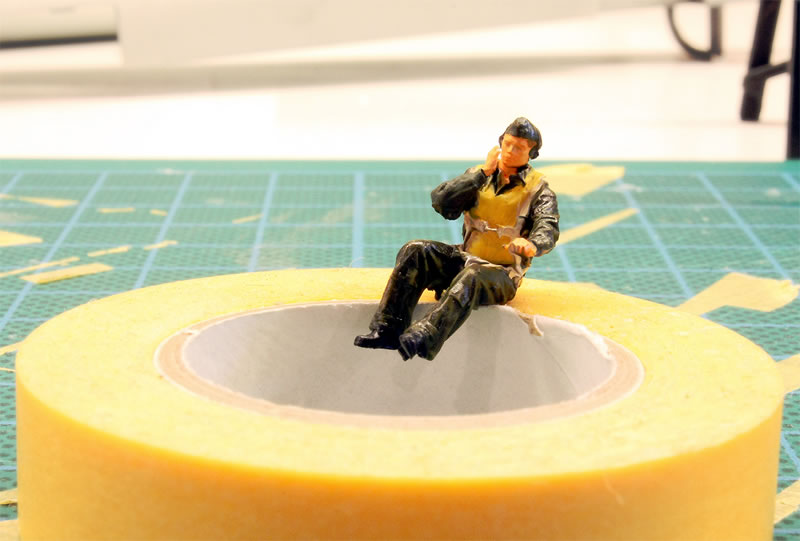
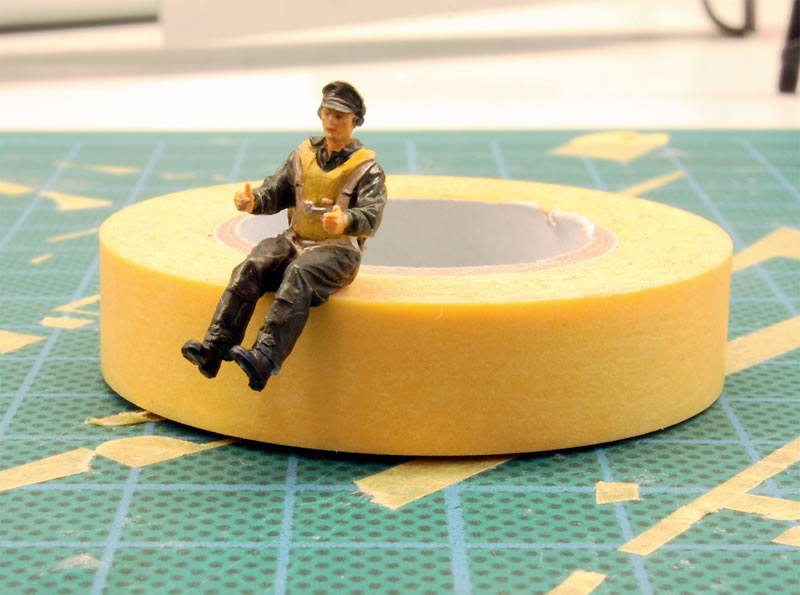


During the building process I had the idea for a long time to show the completed model above a (preferably "Atlantic" looking) water surface. Towards the end of the project, however, an idea solidified that arose in view of the available newspaper reports about the Atlantic flight of the "Alles Kaputt": the aircraft could also float above a collage of newspaper and picture documents! I particularly liked the Sunday edition of "The Sedelia Democrat" of 21 October 1945, which gave a detailed account of the events surrounding the arrival of the four-engined giant.
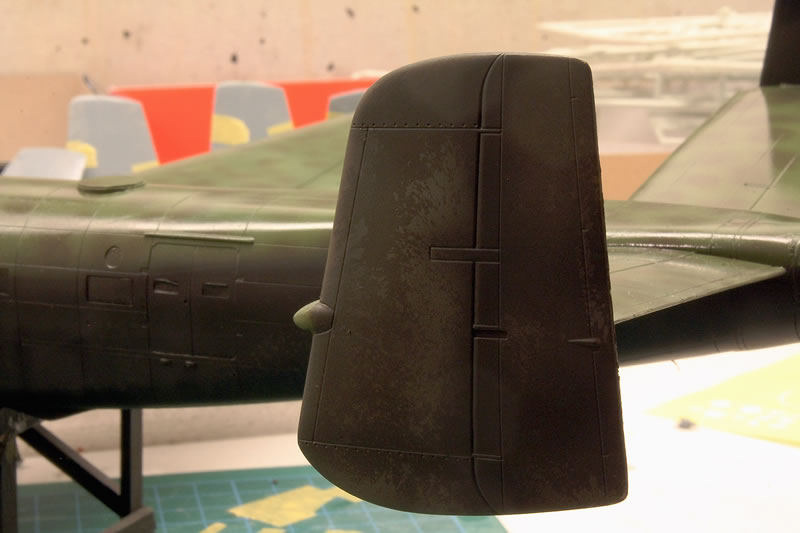
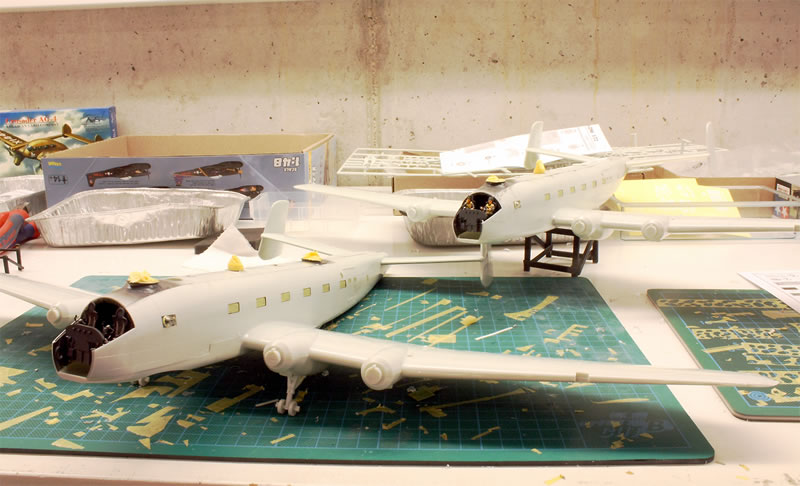
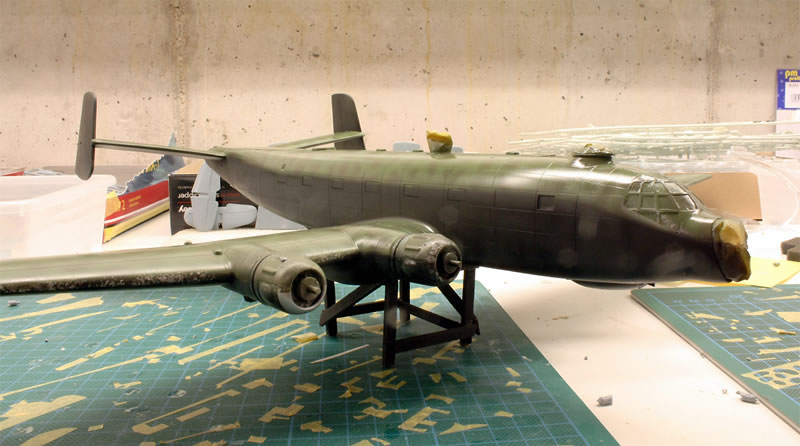

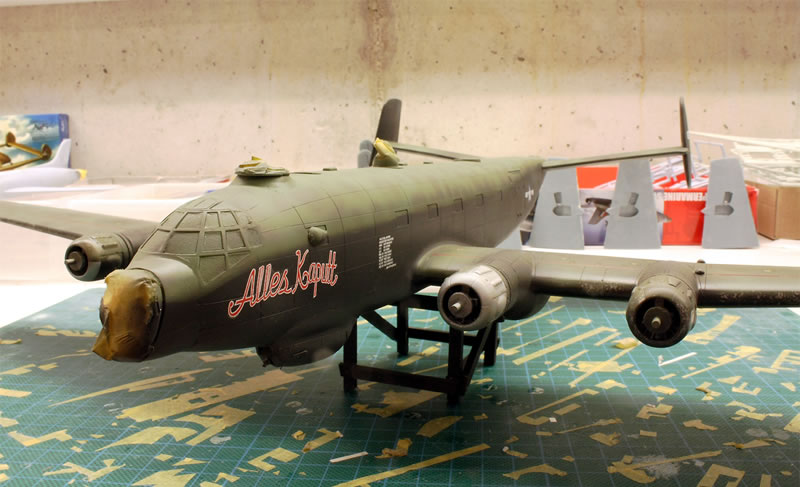
Such an exposition would, on the one hand, bring a bit of contemporary colour to the presentation- and, on the other hand, offer sceptical viewers who cannot believe the highly unusual appearance of this aircraft a nice proof: yes, the Ju 290 "Alles Kaputt" really existed!
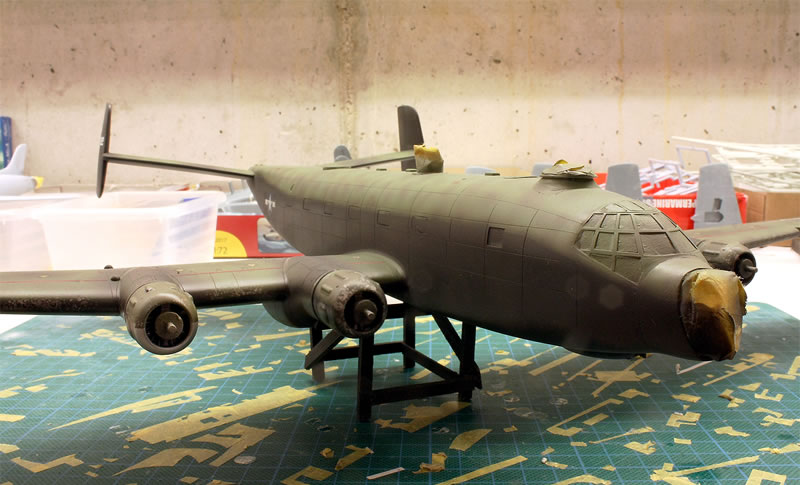

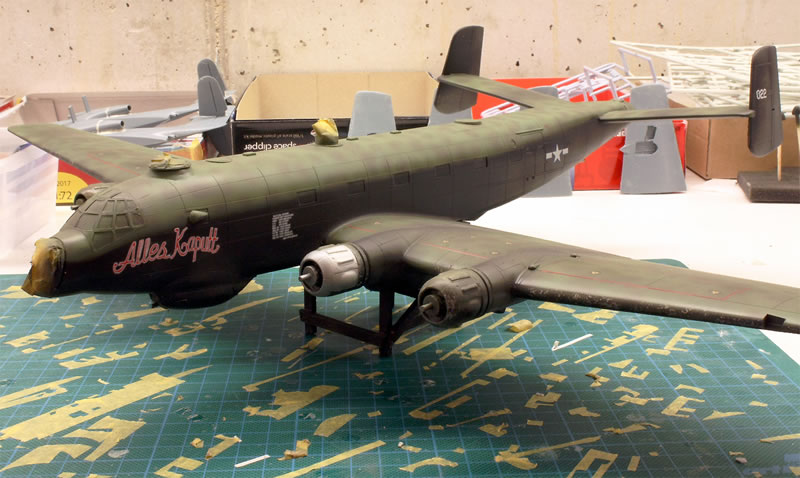
If you are interested in the building process, please have a look here on Scalemates:
https://www.scalemates.com/profiles/mate.php?id=10148&p=albums&album=90216
As ever, remarks will be appreciated:
ro.sachsenhofer@gmx.at
Model, Images and Text Copyright ©
2023 by Roland Sachsenhofer
Page Created 2 February, 2023
Last Updated
2 February, 2023
Back to HyperScale Main Page

|
Home
| What's New | Features | Gallery | Reviews | Reference | Resource Guides | Forum |